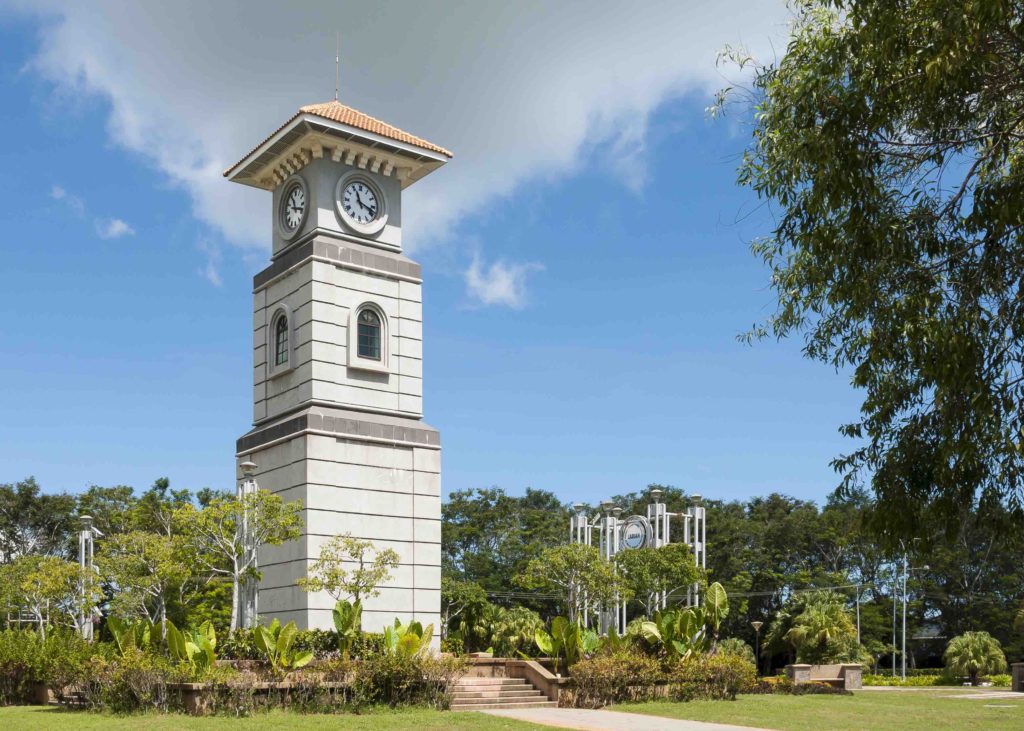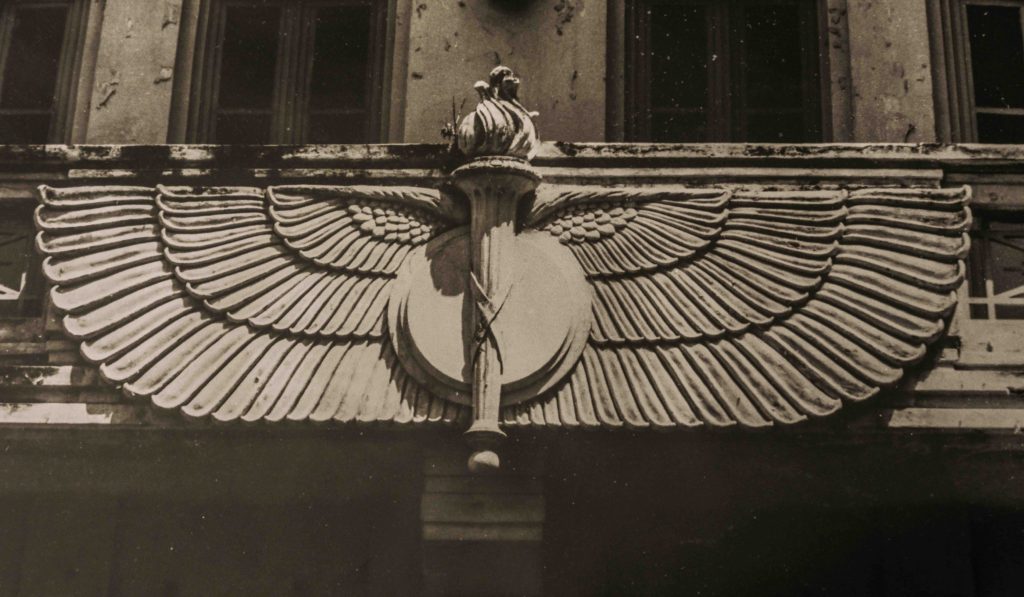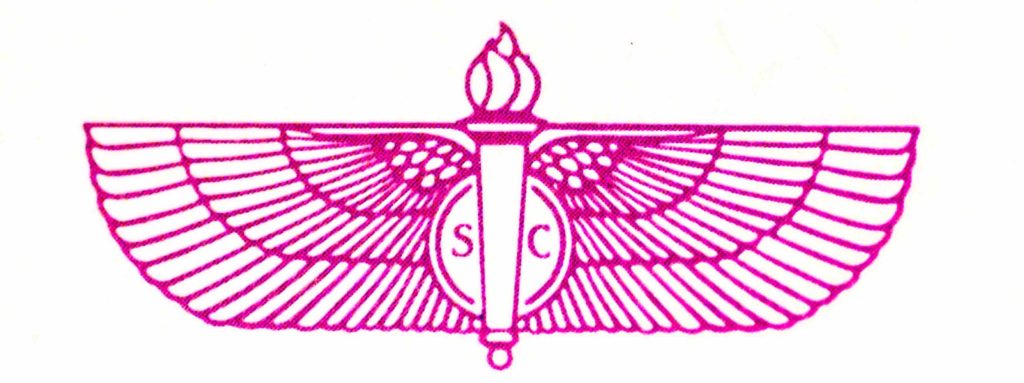- The logo at the entrance of the original Hereen Building. Photo courtesy of the Chee family.
- The logo of Swee Cheng Management Pte Ltd.
Nobody knows the reason for the existence of the winged torch emblem on the old Heeren Building, designed by the architectural firm, Keys & Dowdeswell.
It may have simply been a design feature that complemented the Art Deco style 1930s Hereen building. It bears an uncanny resemblance to the Zoroastrian winged emblem, the Faravahar, which some believe is a symbol of protection and blessing.
There is speculation that Chee Swee Cheng could have picked it as an auspicious symbol for the company he founded.
On 11 January 1991, Swee Cheng Management Pte Ltd was incorporated as the management company to manage the assets of the Chee Swee Cheng Group of Companies. A new design of the winged logo at the entrance of the old Hereen Building was created and adopted as the company logo.
Ang Wee Teck of APSA Pte Ltd was instrumental in adding the “CSCC” letters in the centre of the logo, with “CSCC” standing for Chee Swee Cheng Company. The wings were also simplified.
In 1993, however, management reverted to the original intricate wings in its logo, while maintaining the “CSCC” letters in the centre, with the last “C” facing the second last “C”.
LABUAN CLOCK TOWER

The Labuan Clock Tower in Malaysia was originally built by Baba Chee Swee Cheng in 1906.
The Labuan Clock Tower is a tourist attraction on the island of Labuan, Malaysia. The tower that stands today is an exact replica of the original clock tower built by Baba Chee Swee Cheng in 1906.
It was one of the few structures that survived World War II, but was completely demolished by the British in 1948, and rebuilt by Labuan Corporation in 2002 with funds from the Ministry of Tourism Malaysia.
The Australian War Memorial website noted post-war artist, Donald Friend’s, entry in his diary on 10 June 1945, “…Standing almost alone in a sea of canvas tents, bullet-scarred, the Clock tower apparently at one time embellished the facade of a large public building of which now nothing remains standing after the bombardment.
The arch doorway of the Clock Tower is surmounted by an illegible inscription celebrating the name of the citizen who built it.”


